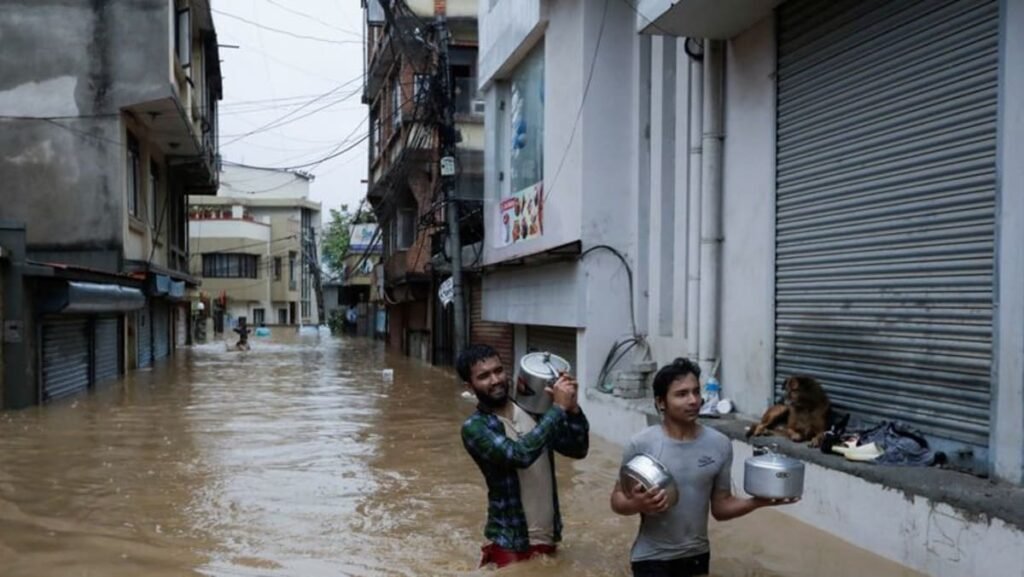Since early on Friday, at least 38 people have lost their lives due to heavy rainfall in Nepal, with the death toll expected to rise as 29 individuals remain missing. Most of the fatalities occurred in the Kathmandu valley, where the flooding disrupted daily activities and transportation. Rescue efforts involved helicopters and rubber boats to reach those stranded on rooftops or elevated ground, with some areas receiving up to 322.2mm of rainfall within a day. The swollen rivers in Nepal have led to overflowing roads and bridges, causing significant damage to infrastructure.
The annual monsoon rains in South Asia were delayed by nearly a week, leading to prolonged downpours across the region. Landslides blocked highways in 28 locations, requiring the police to clear debris and reopen roads for travel. Weather forecasting officials indicated that the heavy rains would likely continue until Sunday morning, with the possibility of clearer weather thereafter. Meanwhile, international flights remained operational, but numerous domestic flights faced disruptions due to the adverse weather conditions.
The Koshi River in southeast Nepal was running above the danger level, posing a threat of flooding in the neighboring state of Bihar, India. The water flow measured at 450,000 cusecs, significantly higher than the normal figure of 150,000 cusecs, indicating a rising river level. Despite ongoing rescue and relief efforts, the region faced challenges as hundreds of people lose their lives each monsoon season to landslides and flash floods. In the current year, authorities reported 254 deaths and 65 individuals missing due to the adverse weather conditions that began in mid-June.
The persistent heavy rainfall in Nepal disrupted normal life, leading to the closure of major roads and affecting domestic air travel. The country’s capital, Kathmandu, experienced significant flooding, bringing traffic to a halt and causing further challenges for residents. As authorities worked to clear roads and provide assistance to those stranded, the weather forecasts indicated a delay in the monsoon retreat this year. The extended rains were attributed to a low-pressure system over neighboring India, causing moderate to extremely heavy rainfall across central and eastern regions, with some areas receiving more than 200mm of rain.
Despite the ongoing challenges posed by flooding and landslides, international flights continued to operate in Nepal, ensuring connectivity with other countries. The significant rise in river levels, particularly in the Koshi River, highlighted the potential for further flooding in neighboring regions, necessitating close monitoring by officials. The tragic loss of lives and ongoing search efforts for missing individuals underscored the dangers posed by the annual monsoon season in Nepal. As the nation grapples with the aftermath of the heavy rainfall, efforts are underway to provide relief and support to those affected by the natural disasters.

